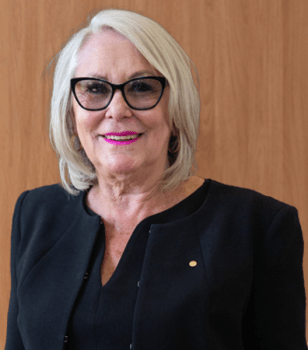The national peak for local government has expressed disappointment that the federal budget failed to address councils’ financial sustainability.
“Once again, our councils – which are the most efficient level of government – and communities have been overlooked in the budget with no new programs to address our financial sustainability emergency,” said Matt Burnett – president of the Australian Local Government Association, which represents the country’s 537 councils.

Pointing to a recent parliamentary inquiry report confirming many councils were at breaking point, Burnett – also Mayor of Gladstone Region in Queensland – said: “The current funding model for local government is badly broken, and we need significant long-term support to deliver local, place-based solutions to national challenges, including affordable housing, community infrastructure, road safety and natural disasters.”
“Increased funding to councils supports the delivery of free and low-cost facilities like local parks, events and libraries – which benefit our communities in this cost-of-living crisis,” he added.
However, Burnett said councils were happy to see the government following through on its 2023 pledge to gradually increase funding for local road maintenance.
“Tonight, we welcome an extra $172 million for the Roads to Recovery program in this year’s budget, as the next step in their commitment to increase funding to $1 billion per year over the forward estimates. This will help to significantly improve the safety and effectiveness of the roads Australians use every day.”
Noting that councils maintain more than 75 per cent of Australia’s local roads, Burnett said “it’s fantastic to see the government recognising the importance of our local infrastructure, and the key role it plays in building more resilient and connected communities”.
ALGA also welcomes an extra $114 million in the Safer Local Roads and Infrastructure Program to enable councils to play a role in supporting the efficient movement of freight around the nation.
“We are fully committed to partnering with the Commonwealth, and state and territory governments, to achieve national priorities through effective local solutions,” Burnett said. “But we can’t achieve this without greater support and sustainable funding to help build more connected, liveable and productive communities.”
Other key budget announcements relevant to local government include:
- an increase in Black Spot Program funding, from $131 million in 2024-25 to $150 million in 2025-26
- an increase in the Safer Local Roads and Infrastructure Program, from $196 million in 2024-25 to $310 million in 2025-26
- $506 million over five years to achieve better outcomes for First Nations people under the National Agreement on Closing the Gap
- $132 million for preventative health, including support for sporting facilities
- $29 million over two years to improve Australia’s resilience to natural hazards
- $723 million over four years for increased support for apprentices.
“While these programs and increases are appreciated, it is disappointing there were no new funding programs announced tonight to address the financial sustainability emergency in local government,” Burnett said. “I will continue to engage with all ministers, shadow ministers and the crossbench on how important it is to see real change to our financial model.”
A missed opportunity to provide fair funding to councils
Meanwhile, the Local Government Association of Queensland said it welcomed the confirmations in the federal budget of $7.2 billion for Bruce Highway safety upgrades and $1.2 billion in Cyclone Alfred support.
“However, the game changer for councils is the federal financial assistance grants which provide untied funding to councils to prioritise their unique community needs – but tonight those federal grants have flatlined,” said LGAQ.

Restoring financial assistance grants to 1 per cent of tax revenue is key to guaranteeing liveability and affordability for ratepayers. “However, tonight’s budget sees them stuck on just 0.51 per cent of tax revenue,” said the peak.
“This federal budget is a missed opportunity to provide fair funding to councils,” LGAQ chief executive officer Alison Smith said. “It’s not good enough that councils and communities have been left behind, with a broken funding model hanging around since the 1970s when so much else has changed.”
Overlooked and frustrated
South Australia’s local governments have been left feeling “overlooked and frustrated” by the budget, says LGA South Australia. “While the budget has a focus on cost of living relief through income tax reductions, it offers little in the way of broad investment for South Australia’s infrastructure and communities,” says the peak.
Describing the Roads to Recovery funding increases as “simply more of the same”, LGA South Australia says the budget fails to address “the growing need for significant, new infrastructure and road funding projects that will genuinely support regional and local priorities”.
Financial assistance grants, meanwhile, “continue to remain stagnant at just 0.5 per cent of national taxes, a far cry from the 1 per cent councils have been asking for”.
The lack of investment in our communities is a significant contributor to the financial sustainability challenges
Local Government NSW also expressed disappointment over financial assistance grants. “The lack of investment in our communities is a missed opportunity and a significant contributor to the financial sustainability challenges faced by councils,” said LGNSW president Phyllis Miller.

However, Miller acknowledges that the budget papers note that the Australian government will continue to work with the states in relation to financial support of councils, “including advancing funding earlier than would usually occur”.
Miller said LGNSW will continue to advocate “for clarification on the timing of any financial assistance grant payments and a return to 1 per cent of Commonwealth taxation revenue to be provided to councils in financial assistance”. This return to 1 per cent will be “a central plank” of LGNSW’s federal election campaign in partnership with ALGA and interstate associations.
As for the Roads to Recovery grants to NSW, an increase of more than $40 million year-on-year was in line with expectations, said Miller. “It’s good to see the Commonwealth sticking to its commitment to gradually double this funding.”
An increase by more than 50 per cent to the Safer Local Roads and Infrastructure Program, was a significant and unexpected increase in this important program”, she added.
Disappointingly, the Local Roads and Community Infrastructure program funding remains scheduled to be phased out by the end of 2025-26. “This funding for roads, open space, sporting facilities, active transport infrastructure and tree planting is so important for making communities liveable,” said Miller.
The budget also includes no further funding for the Thriving Suburbs Program, which provided funding to councils for projects that enhance liveability and support local amenity.
“In better news for communities”, the budget includes $5 billion towards building a new universal early childhood education and care system, which guarantees eligibility for at least three days a week of subsidised early childhood education and care. “This will support communities and the more than 300 local government early childhood education and care services across NSW,” said Miller.





We had a 25bn deficit under labour last year, this year it is 50bn
We have now hit 1trillion dollar debt (spread over roughly 30million)
That is 33,000 per man woman and child
1 IN 5 WORKERS ARE GOVT = NEARLY 3M
Solution CUT ALL GOVERNMENT SALARIES BY 8,000 PER ANNUM for 5 years
Up from $6,000 each to $8,000 each to take into account he additional interest on the 1 TRILLION..
____________________________________________________
Labour Force, Australia, February 2025 – Australian Bureau of Statistics
https://www.abs.gov.au › statistics › labour › latest-release
Key statistics · unemployment rate remained at 4.0%. · participation rate remained at 67.0%. · employment increased to 14,547,800. · employment to population ratio …
________________________________________________________
Senator Gerard Rennick – “Nearly one in five workers in ..
“Nearly one in five workers in Australia is a government employee, with wage rises — far outpacing those in the private sector — and hiring sprees driving public sector spending to a record 27.3 per cent of GDP in the June quarter.15 Jan 2025